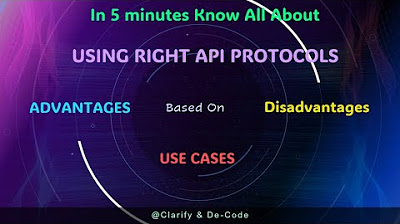The Stream Data Model - Mining Data Stream - Big Data Analytics
Summary
TLDRThis video explores the concept of mining data streams, focusing on continuous flows of data from various sources like social media, financial transactions, and sensors. It covers the challenges of managing and processing such large, unpredictable data in real-time, including storage, latency, and scalability. The video discusses key techniques such as filtering, counting distinct elements, and detecting frequent patterns in data streams. It also highlights practical applications like web traffic analysis, social media trends, and telecommunication monitoring. Overall, the video provides insights into how data stream mining helps analyze dynamic data effectively and in real-time.
Takeaways
- 😀 A data stream is a continuous flow of data transmitted in real-time, such as video, audio, or other information over the internet.
- 😀 Mining data streams requires real-time processing, as we don’t have access to all data upfront; we must work with incoming data as it arrives.
- 😀 Social media platforms, search engine queries, online gaming, financial transactions, and sensor data are common sources of data streams.
- 😀 Key challenges in data stream mining include storage limitations, processing power constraints, data durability, and latency issues.
- 😀 Data scope refers to the window of time considered for processing data. It can range from minutes to hours depending on the use case.
- 😀 A sliding window technique helps manage data by processing only recent data within a defined time frame, ignoring older data.
- 😀 Latency is a critical factor in stream processing, meaning the time delay between receiving data and generating a response, which needs to be minimized.
- 😀 Filtering queries allow selecting specific data elements based on certain properties (e.g., tweets from a specific user).
- 😀 Counting distinct elements is important in data streams to identify unique occurrences, such as counting distinct users on a website.
- 😀 Frequent element mining helps identify repetitive patterns in data, such as identifying popular queries or frequent users on a platform.
- 😀 Applications of data stream mining include social media analysis, web analytics, telecommunication billing, network security, and real-time recommendations.
Q & A
What is a data stream in computing?
-A data stream in computing refers to a continuous flow of data transmitted and received over a network, such as video or audio data. It doesn't stop and is continuously generated.
Why is stream management important when dealing with data streams?
-Stream management is important because the input rate of data streams is externally controlled and unpredictable. This makes it challenging to handle the flow of data without knowing the exact amount in advance.
What are some examples of sources for data streams?
-Examples of data stream sources include sensors in transportation vehicles, industrial equipment, social media platforms, financial transactions, and real-time applications like online gaming and media publishers.
What is meant by 'window' in data stream processing?
-In data stream processing, a window refers to a specific time frame, like the last 10 minutes, within which data is considered. Data outside this window is not included in the analysis.
What challenges are faced when working with streaming data?
-The main challenges are storage, as the amount of data generated can be huge, and processing, as it is difficult to handle large amounts of data in short periods. Scalability and durability are also important factors to consider.
What is latency in the context of stream processing?
-Latency refers to the time difference between when a request is made and when the response is received. In stream processing, low latency is crucial for real-time analysis, typically in the order of seconds or milliseconds.
How does stream processing handle scalability and durability?
-Scalability in stream processing refers to the ability to handle increasing amounts of data over time. Durability involves ensuring that data is stored appropriately, often summarized or compressed, to avoid overwhelming storage systems.
What types of queries can be answered using data streams?
-Queries on data streams include filtering specific elements, counting distinct elements, estimating statistical moments (mean, standard deviation), and identifying frequently occurring elements.
What are some common applications of data stream mining?
-Common applications include monitoring social media trends, customer behavior analysis, detecting unusual activities in network traffic (e.g., denial of service attacks), and tracking real-time data for online gaming or financial institutions.
What is the challenge of storing vast amounts of streaming data?
-The challenge lies in the sheer volume of data generated. For example, placing thousands of sensors in an environment can generate terabytes of data in a short period, making storage and processing a significant challenge.
Outlines

This section is available to paid users only. Please upgrade to access this part.
Upgrade NowMindmap

This section is available to paid users only. Please upgrade to access this part.
Upgrade NowKeywords

This section is available to paid users only. Please upgrade to access this part.
Upgrade NowHighlights

This section is available to paid users only. Please upgrade to access this part.
Upgrade NowTranscripts

This section is available to paid users only. Please upgrade to access this part.
Upgrade NowBrowse More Related Video

Data Mining Foundations Eps-01 Apa itu Data Mining?

Data Buzzwords: BIG Data, IoT, Data Science and More | #Tableau Course #1

Pengantar Data Analitik - Perkuliahan Data Analytic & Data Mining #02

#1 Introduction To Data Mining, Types Of Data |DM|

In 5 minutes Unlock the API powers REST gRPC GraphQL Websocket SOAP #api #restapi #graphql #soap

General Model of AIS
5.0 / 5 (0 votes)